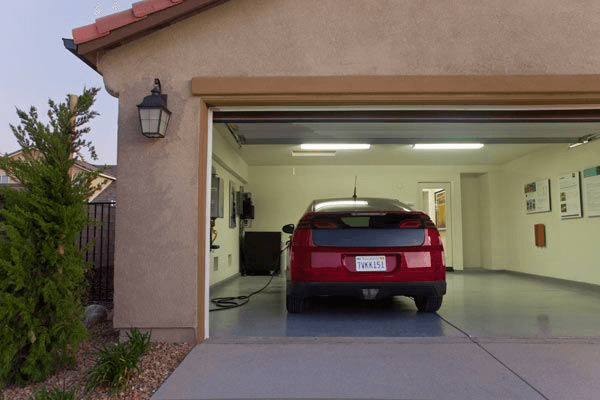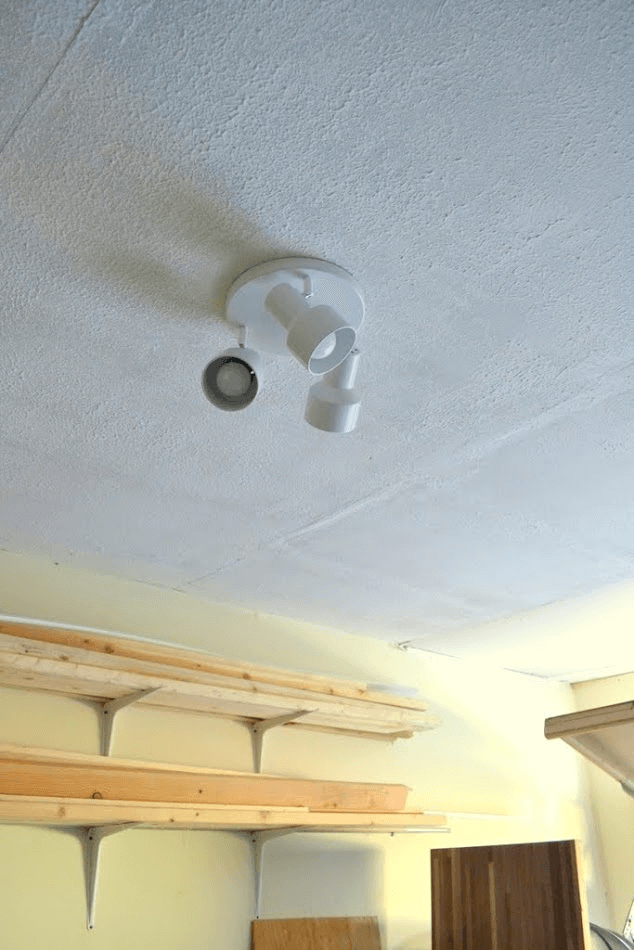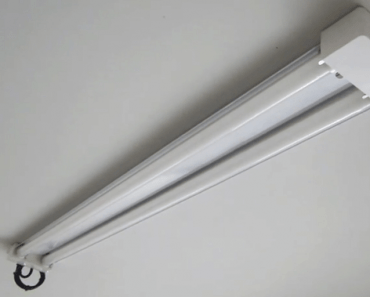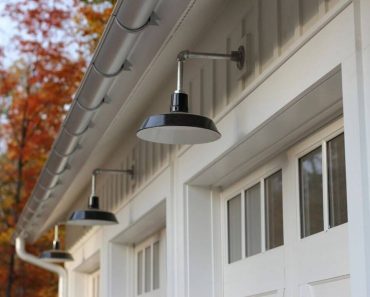Depending on what you want to do in the garage, garage lighting can be a serious problem. If you only use your garage to park your vehicle safely, then one bright light is probably more than enough.
However, if maintenance and showcasing is within your list of activity, then it’s better to consider proper lighting for your garage. Let’s learn the types of lighting, which one is the best for you, and what to consider when installing lighting in the garage below.

What Type of Lighting Should You Install?
Think an overhead lamp is more enough for your garage? Well, think again. Unless having a dark, shady horror-esque garage is your thing, then let’s consider the lighting types you can use. Generally, the more activity that needs to be done in the room, the better it is to gain better visibility. Better visibility means good lighting installation. Check these three lighting types for your consideration:
1. Ambient
The softest lighting type among the three. This type of lighting is usually installed overhead in the purpose of illuminating as much wall and floor space as possible. Therefore, it’s comfortable yet covers good visibility, making it easier to park your vehicle or walk around the room safely. Usually uses overhead bulbs.
2. Accent
The brightness of this lighting type is between Ambient and Task. As the name implied, this type is meant to ‘accentuate’ any sort of display in the room, be it trophies, tools, knick-knacks, or vehicle collection. Perfect for those who use their garage for showcasing. Usually uses spotlight lamps or LED strips.
3. Task
The brightest type among the three. Task lighting is the brightest since the area covered by this lighting needs attention for details. It’s best for any organizational or detail-oriented projects you want to do in the garage. Usually uses lamps with adjustable height.
So, which type of lighting is the one? Of course, the choice depends on the garage’s purpose. For one, all garage would need the Ambient type since walking around the room is best with enough visibility. If you only use the room to park your vehicle and store tools, then just ambient lighting should be enough.
The other two types have specific purposes. If you want to display something, use the Accent type. On the other hand, if you are planning to use the room for some projects (related to the vehicle or not), then Task type should be included in your build. Easy, right?

How About the Bulb Type?
As long as the bulb has good CRI (Color Rendering Index), then any bulb should be good for your garage. CRI refers to how good can the bulb render as many colors in the spectrum as possible. For garages, the recommended level is 85 to 100. If you use a 100 CRI level bulb, then the room should be as bright as a sunny midday.
However, remember that the type of bulb affects electric bills. Incandescent bulbs may have high CRI levels, but they consume a lot of power. Fortunately, you can get the best for both quality and bills with fluorescent and LED lamps.
LED lamps, especially, are bright without using as much power as incandescent ones. For a comparison, 60-watt incandescent bulb, 14-watt fluorescent bulb, and 10-watt LED have the same light output. As you can judge from the wattage, the last two bulb types are more energy-effective.

How Many Lamps Should You Install?
OK, now we know the type of bulb to use. However, which wattage should we choose? That depends on the size of the room. The smaller the room, the more effective lighting should be. That means small garages would need lesser lighting compared to big ones.
However, before positioning the lamps, count how much bulb is needed for effective lighting for the room. You can count them using online calculators or converters such as lumens-to-watts conversion to help to get the rough idea.
That aside, there’s actually a good thumb-rule you can follow for installing workshop lighting. According to IES (Illuminating Engineering Society), residential and workshop garages require different lumens rates. For residential garages (or garages with parking as the only purpose), 50 lumens per square foot is more than enough. However, 300 lumens per square foot is necessary for workshop ones.
These rules are measured based on the lumens level of the proper lighting for each type of garage. That means 50 lumens is enough for ambient lighting and 300 lumens is most effective for task lighting.
If you want to install accent lighting, 75 lumens per square foot should be enough. Of course, you don’t have to use only a type of lighting to fulfill the rule. It’s possible to combine the three types of lighting to make the room as well-lit and comfortable as possible.
Extra Touches
Lamps are the best way to lit a room. However, that doesn’t mean you should work under LEDs all the time. Instead, consider installing windows for day time lighting. Sure, windows are rare for garages, but if you want to work in it even during daytime, then windows would save a lot of electricity. For stable midday lighting, install skylights instead of side windows.
Speaking of lighting, it doesn’t have to just be installed inside. If the area of the garage is not very well-lit, then consider installing some near or on the entrance. The easiest way to do this is by installing LED strips on your garage door. This way, you should be able to find the way into the garage when going home at night.
Anyway, have you ever forgotten turning off the lights and let it on the whole day? If so, then motion sensors may be the best choice for your garage. After all, with this sensor, the light will automatically turn on when you entered and move about the room and vice versa.
Yes, just like any other room, as long as the room is lit then it should be sufficient. However, such standard is only enough when you don’t have the exact purpose for the room. So, if your garage actually has more purpose than parking, then it’s natural to take lighting arrangement into consideration.



